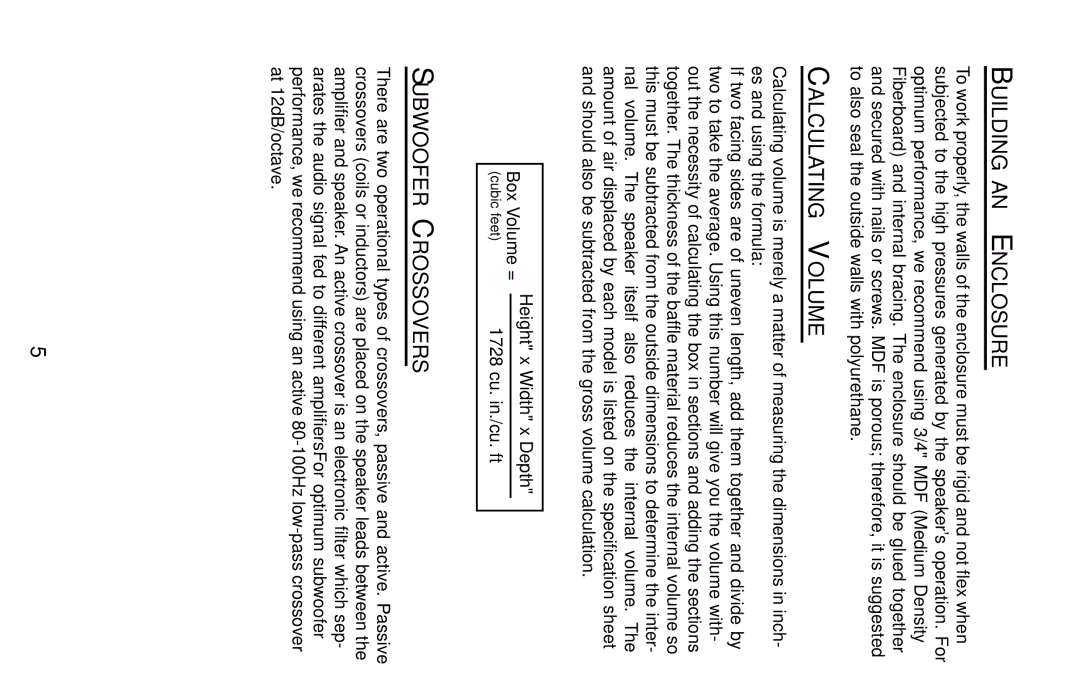BUILDING AN ENCLOSURE
To work properly, the walls of the enclosure must be rigid and not flex when subjected to the high pressures generated by the speaker's operation. For optimum performance, we recommend using 3/4" MDF (Medium Density Fiberboard) and internal bracing. The enclosure should be glued together and secured with nails or screws. MDF is porous; therefore, it is suggested to also seal the outside walls with polyurethane.
CALCULATING VOLUME
Calculating volume is merely a matter of measuring the dimensions in inch- es and using the formula:
If two facing sides are of uneven length, add them together and divide by two to take the average. Using this number will give you the volume with- out the necessity of calculating the box in sections and adding the sections together. The thickness of the baffle material reduces the internal volume so this must be subtracted from the outside dimensions to determine the inter- nal volume. The speaker itself also reduces the internal volume. The amount of air displaced by each model is listed on the specification sheet and should also be subtracted from the gross volume calculation.
Box Volume = | Height" x Width" x Depth" | ||
|
| ||
1728 cu. in./cu. ft | |||
(cubic feet) | |||
|
|
| |
SUBWOOFER CROSSOVERS
There are two operational types of crossovers, passive and active. Passive crossovers (coils or inductors) are placed on the speaker leads between the amplifier and speaker. An active crossover is an electronic filter which sep- arates the audio signal fed to different amplifiers. For optimum subwoofer performance, we recommend using an active
5
